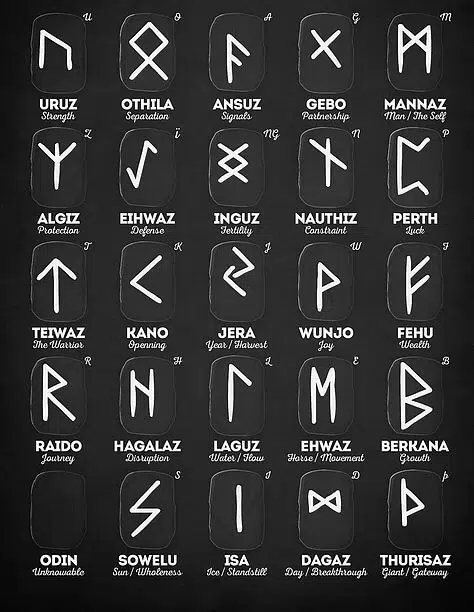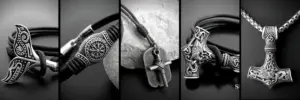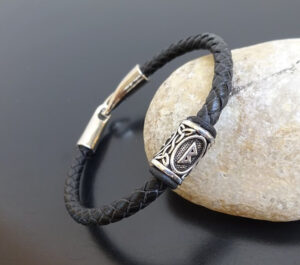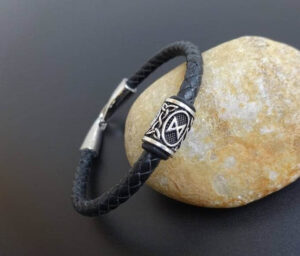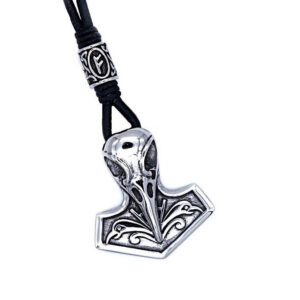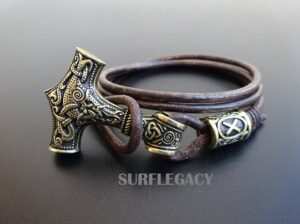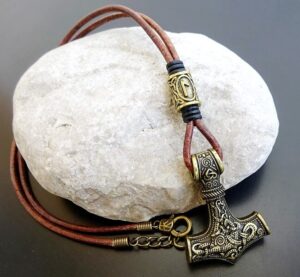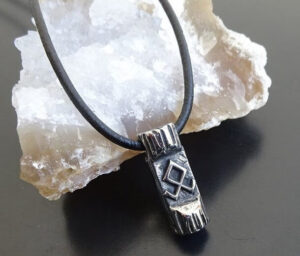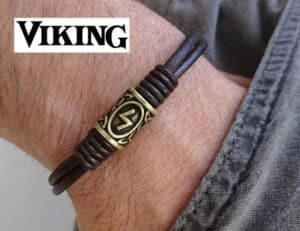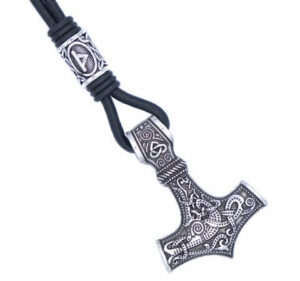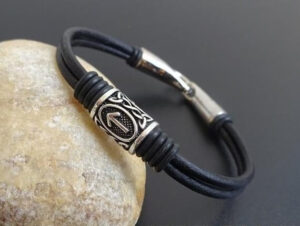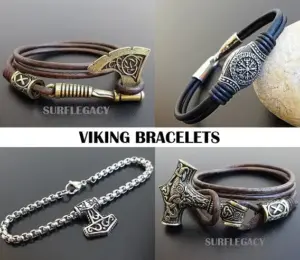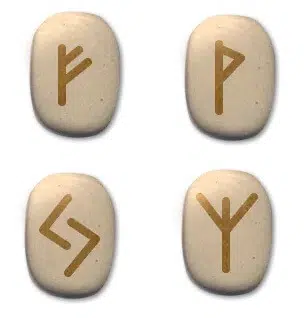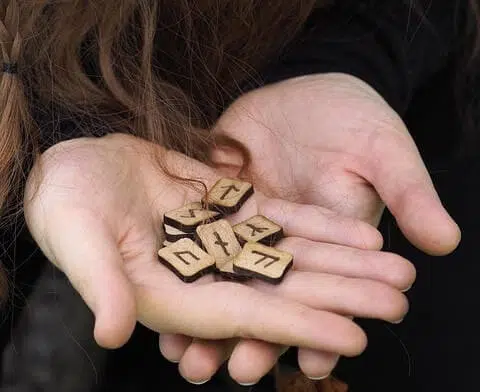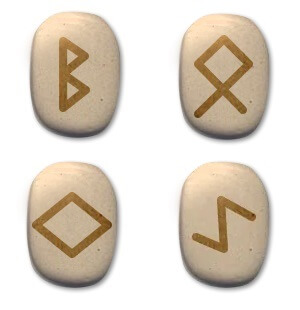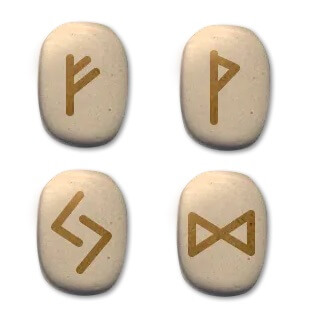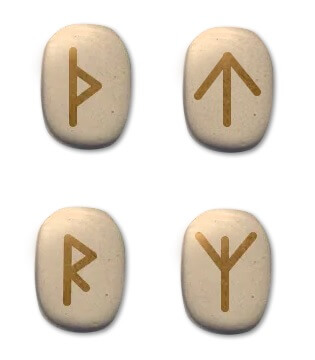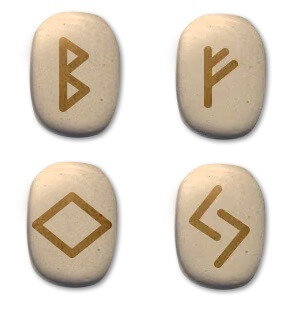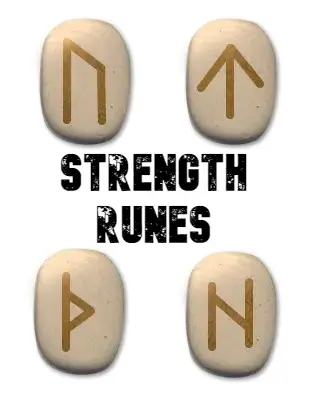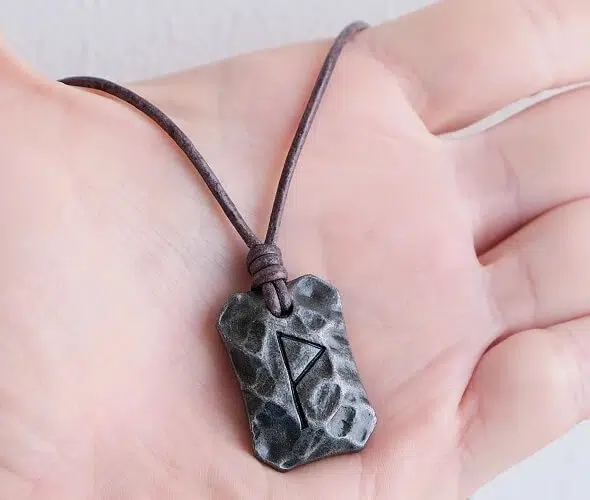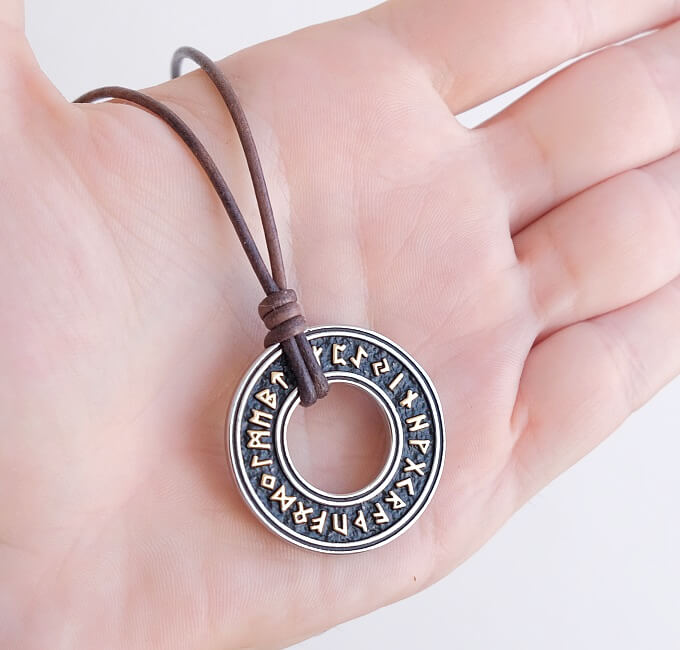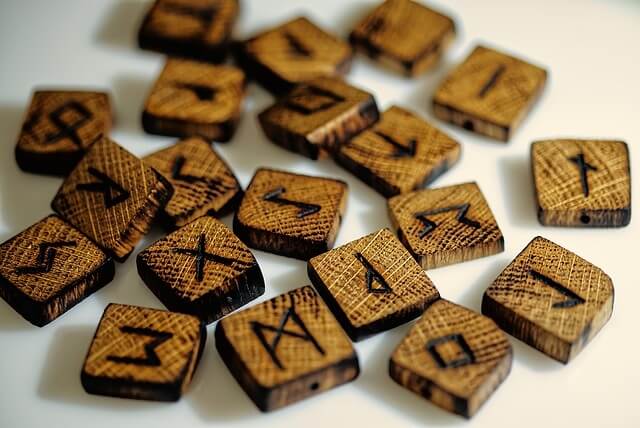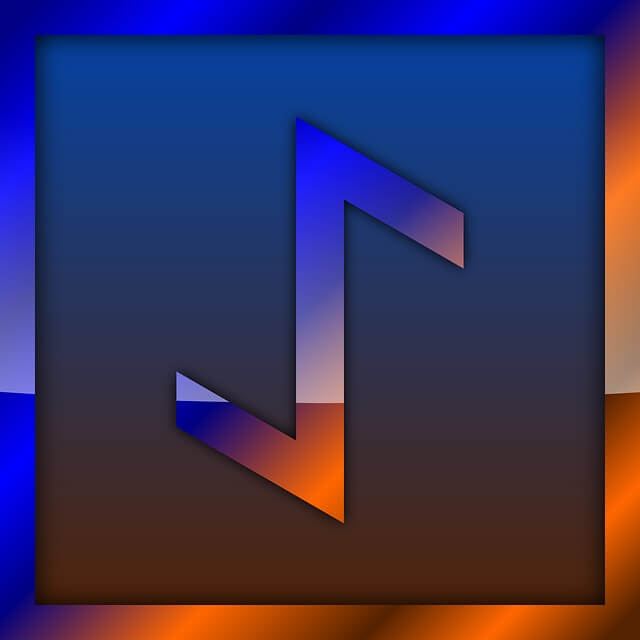Norse runes find their origins in the Germanic-Viking tradition and were also used by the mysterious Celtic people as a divinatory and magical tool associated with the traditional form of Druidic divination expressed through the reading of the Ogham; the pieces of wood carved with symbols representing their cryptic alphabet.
Key Takeaways:
- Norse runes originated in the Germanic-Viking tradition and were used for writing, divination, and magic. There are two main runic alphabets: Elder Futhark (24 runes) and Younger Futhark (16 runes).
- Each rune has its own unique meaning and purpose related to concepts like protection, communication, birth, movement, wealth, joy, and more. Runes can be carved on objects or drawn for talismanic purposes.
- Rune divination was popular in the Viking Age to consult the gods. Runes were also used for magic spells and protection rituals.
- The Younger Futhark developed from the Elder Futhark as a simplified alphabet. It was used throughout Scandinavia and the British Isles during the Viking Age.
- The meanings of the runes can be complex and open to different interpretations. Learning how to properly read and interpret the runes takes time and practice.
What are Norse Runes?
Although today most of the Western world writes using the signs of the Latin language (the alphabet inherited from the Roman Empire), other alphabetic systems were used before these.
One of these is the Norse runes, a system of signs that arose in the regions of Scandinavia during the Viking Age and was later exported to Great Britain and parts of Central Europe.
It is an ancient alphabet, dating back to the year 150 of the Christian era, which was used both to write and to perform some magical rituals related to divination.
If you want to know a little more about this interesting subject the following articles might be of interest to you how to read runes and rune meanings
These practices were passed down orally and for this reason, when reading a text on the Runes, it is possible to be faced with differences in content if the texts are compared to each other.
This is due to the fact that the sources handed down refer to the memory of individuals who have collected them.
What matters, however, is their effectiveness, and whatever source you use, you will find that what they say always responds to reality.
They are indeed an inexhaustible source of power, possibilities, and suggestions; a very valid divinatory method used even in our days.
In Europe, especially in the north and during the Middle Ages, Norse Runes were the protagonists of various magical rituals and for this purpose are still used today especially drawing the symbols for talismanic use.
Norse runes symbols tell us about everyday life and are engraved on wooden tablets or on pebbles and shells. The soothsayers throw them on the ground and read the auspices.
Norse Rune Alphabet
The Norse rune alphabet was composed of 24 signs that represented the different vowels and consonants of the Germanic-Scandinavian languages.
The angular and linear writing of the runes is due to the fact that they were mainly engraved on wooden tablets, stones, and other hard materials.
This made it difficult to draw curved signs, to which straight lines and angles were preferred instead
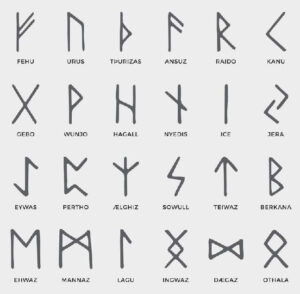
Elder Futhark
The oldest Norse runes system is called Elder Futhark:
it divides the 24 runes into 3 groups (Aettir) each formed by a series of 8 runes and is named after the initials of the first 6 runes of the first group, called the Fehu group.
The Fehu group encompasses a microcosm and different purposes. It represents from the first rune Fehu, which means livestock, understood as prosperity of goods, to the eighth rune Winjo, which means joy and honors, the prerequisites for a stable and prosperous existence.
In the second group called Hagalaz, the common thread, however, is the overcoming of adversity and the unpredictability of life, and then, the questioning to get to an awareness of inner growth.
The third and last group called Tiwaz, begins with Tiwaz and ends with Othala. These 8 runes give an overview of both positive progress and negative aspects, however, ultimately providing the strong hope of spiritual growth for man.
The Norse rune alphabet can also be used to write your name or words that have special meaning to you on jewelry you wear such as rings, bracelets, and pendants, or on a specific object.
Younger Futhark
The Younger Futhark, also called Scandinavian runes, or Viking runes, is a runic alphabet and writing system used by the Germanic people of Northern Europe, Scandinavia, and the British Isles from the late 8th century to about the 12th century AD.
The alphabet consists of 16 characters, most of which represent consonants, with a few representing vowels.
The name Younger Futhark comes from the fact that it is the younger of two closely related runic alphabets: the other being the Elder Futhark.
Both alphabets have the same number of letters and are descended from the Proto-Germanic alphabet.
The difference between the two is that the Younger Futhark has fewer letters, as some of the Elder Futhark letters were dropped during the transition from the Elder to the Younger Futhark.
The Younger Futhark is thought to have been developed from the Elder Futhark by the Scandinavians, who were trying to simplify the alphabet to make it easier to learn.
This is reflected in the fact that the Younger Futhark has only 16 letters, while the Elder Futhark has 24.
The Younger Futhark is first attested in the 8th century, with the earliest known inscription being the the Rök runestone, which dates to c. 800 AD.
The alphabet continued to be used throughout the Viking Age and into the Middle Ages.
The Younger Futhark is divided into two main branches: the Danish runic alphabet and the Swedish-Norwegian runic alphabet.
The Danish runic alphabet is further divided into two sub-branches: the insular script and the continental script.
The Younger Futhark is written from left to right, like most modern alphabets. Each character consists of one or more straight lines, which are intersected at right angles.
The characters are generally simple geometric shapes, such as triangles, diamonds, and circles.
The Younger Futhark alphabet is thought to have been influenced by the Latin alphabet, as well as by other writing systems, such as the Greek alphabet and the Etruscan alphabet.
The earliest known inscriptions in the Younger Futhark are on two bracteates, small metal discs worn as amulets, which date to the late 8th or early 9th century.
The bracteates are inscribed with images of animals and humans, as well as runic characters. The runic inscriptions on the bracteates are short, consisting of only a few characters.
They are thought to be magical in nature, and may have been used to ward off evil spirits or to bring good luck.
The Younger Futhark began to be replaced by the Latin alphabet in the 12th century, as the countries of Scandinavia and the British Isles became increasingly Christianized.
The last known inscription in the Younger Futhark is from 1171 AD, and it is believed that the alphabet was no longer in common use by the end of the 12th century.
Norse Runes The Complete Guide
Each Norse Rune has its own meaning and purpose. The meanings of the runes are often very complex, and can be interpreted in different ways.
However, there are some general meanings that are associated with each rune. Here is a list of all the Norse Runes, along with their meanings:
Algiz
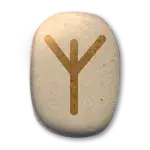
The traditional meaning of Algiz is protection, defense and illumination. The main meaning of this rune is protection and is one of the most benevolent runes that connects the survival instinct with the defense mechanisms.
A kind of self-protective force that is drawn from the spiritual source and forming a shield defends you from attacks and dangers from various levels: physical, emotional, mental and spiritual.
It is the rune of discoveries that warns about imminent dangers in order to prevent misfortunes.
It is also a sign of great optimism and positivity helping us to receive inspiration for new creative ideas. Inverted indicates lack of protection and vulnerability to external circumstances.
Ansuz
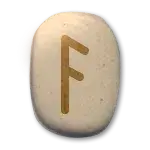
Ansuz is the rune of communication and sound, especially in the language understood as intelligent communication and awareness. It signifies honesty, messages, meetings and success in an exam or test. Turned upside down it is an omen of bad advice, falsehood, deception, and therefore advises caution in dealing with others.
Berkana
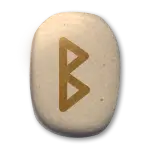
Feminine power, growth and security. This rune recalls the shape of the breast of a mother who has the power to nurture and take care of what must grow and manifest.
Berkana is sweet energy, maternal, which can indicate in addition to birth or marriage, even the beginning of an idea, a project or a new way of thinking to achieve a common goal.
So Berkana is considered to all intents and purposes the rune of beginnings. Turned upside down can mean a halt in growth, stagnation and disharmony within the family and the couple.
Dagaz
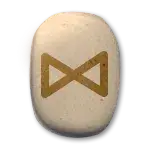
Day, completion. The rune Dagaz is the rune of awakening, the light of dawn after the darkness of night. It is compared to the butterfly that transforms out of the cocoon and free hovers in the sky and light.
It is an extremely favorable rune and, despite the obstacles, represents the strength and willingness to pursue projects and to conclude them successfully.
Ehwaz
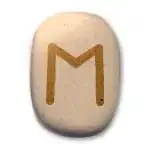
Horse, movement and progress. It is a rune that is associated with the bond between the horse, from which it derives its name, and its rider.
This alliance is what allows you to overcome obstacles by working in unison, which is why it recommends embarking on journeys or projects or collaborations with companions who share your way of thinking.
To summarize Eh represents physical, spiritual or legal ties between men. Reversed can foretell breakups of relationships and estrangement or falsehoods. In this case Ehwaz urges us not to change anything and wait for a more favorable time.
Eihwaz
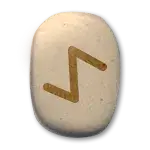
Tree of life, resistance. It is no coincidence that this rune represents the yew tree, long-lived and evergreen, and together with it is the confirmation of continuity and perseverance that can challenge all negative influences including death.
It represents the power that connects the mortality of the physical with the immortality of the spirit and helps us to feed the hope-giving continuity to the ideals to turn them into reality.
Fehu
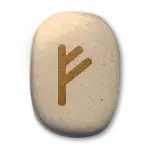
The Fehu rune has the symbol of a cow’s head with horns, an animal sacred to Hinduism and many other ancient religions. Literal meaning livestock abundance, translational meaning Success, work that bears fruit. Wealth.
In primitive cultures, cattle were used as currency. Livestock involved hard work and had to be fed and cared for, Fehu therefore indicates “sweated” wealth and not unexpected gain. It also means satisfaction, goals achieved, business and luck. Flipped indicates financial difficulties, passivity and boredom.
Gebo
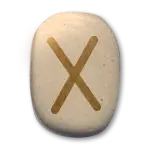
Gift, generosity. Gebo is one of the most favorable runes that can appear. It indicates receiving or giving a gift, generosity or hospitality offered and had.
This rune foretells that the projects in progress will get positive results and especially referring to ties of couples a happy relationship without constraints on either side.
Hagalaz

Hail, storm, breakage. This rune can be interpreted as a warning that operates in our subconscious to warn us that it is time to make a bitter but necessary change.
A change from a past history, unresolved problems and lessons never learned. Hagal teaches us that it’s time to face problems and recognize them so that we are not unprepared for sudden events and find the strength to continue on the path.
Inguz
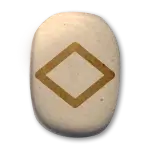
The continuity of life, development and progress. This rune can be compared to the DNA chain that contains all the information necessary for the creation of a new life. It heralds the completion of a favorable period and the beginning of another better.
It can also signify the realization of a project to which one had dedicated one’s whole life. In any case, the extraction of the Ing rune indicates the possibility of something favorable happening that could change our existence. It also represents the family union and descent
Isa
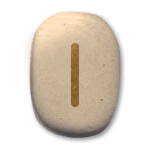
Ice, conservation, stagnation and isolation. This rune symbolizes the principle of static and preservation of things in their invariable state both for good and evil.
Like Hagal and Not also Is is not reversible and its meaning, therefore, remains unchanged however it occurs.
Extracted during divination, Is indicates that at the moment there is no possibility to change the order of things and any projects and works in progress will suffer delays.
It will therefore be better to “freeze” them until the arrival of a more favorable period.
Jera
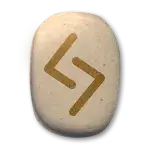
Harvest, cyclical change, year. Jera is a favorable rune that heralds positive changes. It brings us gradually to maturity and the certainty of being able to reap the benefits of what was sown during a year of toil and hard work.
It is also a symbol of success in business and the harvest of fruits in the study. Jera warns, however, not to force events because there is a right time for everything.
Kenaz
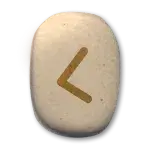
Kenaz is a positive rune, that helps “healing” in all its aspects: from business difficulties to health problems. Rest, purification, transmutation.
The rune Kenaz offers us light in the dark giving us the opportunity to truly see what was previously hidden through transformation.
It opens up new possibilities and the strong impulse to express ourselves through art and creativity.
It means inspiration, revelation, discernment, and artistic talent. Turned upside down indicates loss of intuition and direction, end of a relationship whether of love or friendship or failure of a project just beginning.
Laguz
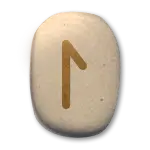
Water, fluid force. This rune symbolizes the flowing water, carrier of regenerating life force. It is linked to changes in energy and growth through their experiences, has the task of helping us to understand the cyclical nature of things and give new impetus to the rebirth for the beginning of a new phase of life.
It can also help to strengthen the sensitivity, to harmonize with the “ups and downs” of life, and realize their potential.
Turned upside down indicates poor judgment, wrong intuitions, and situations for which you do not have the right requirements to deal with them positively.
Mannaz
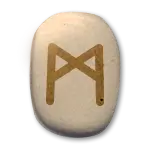
Humanity, solidarity, intelligence, motivation. From the spiritual point of view, this rune represents the whole of humanity in the balance of the world around us and attests to the solidarity common to all men, regardless of age, race, sex or religion.
It indicates a balanced and correct mentality and embodies the power of the divine that pushes us in the direction of perfection.
Mannaz is a rune of the mind and controls verbal communication and intellectual abilities, although its true power is to unite reason with intuition thus creating a link between the conscious and unconscious.
Inverted signify loneliness, pessimism and stubbornness, as well as a refusal to accept advice, opinions or points of view other than one’s own.
Nauthiz
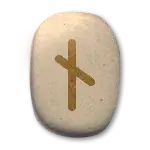
Necessity, need, resistance. This rune has as its first meaning the need, a need sought in the lack or shortage of something, then indicates limitations of all kinds even if not insurmountable.
It too is in fact the bearer of a warning that is to examine their projects and reflects very seriously on whether to continue or not, without, however, never give up hope.
It also gives us the strength to willingly accept suffering and sacrifice, making them, where possible, constructive in the hope of better times.
Othila
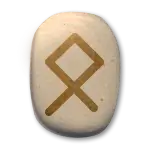
Also called Othala, means family possessions, heritage. This rune symbolizes the fence that delimits the property and innate qualities both spiritual and material.
It is the power to obtain and predicts favorable answers to all questions concerning one’s possessions, family interests or social life.
Inverted can mean loss of property or exclusion from a community. It can also indicate disputes about inheritances or legacies, or a sudden request for repayment of a loan.
In any case Othila reversed indicates a problem that not even money or an inherited position can solve.
Perthro
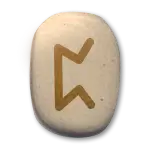
Secrets, cheerfulness. Perthro represents more than any other rune joy and exuberance even if placed in excess could indicate chatter and excessive “lightness”.
It also reveals a hidden knowledge, an inner secret to be guarded and protected in order to later be born and progress.
It is not by chance that Perthro symbolizes the bag closed by a rope in which the runes are kept and from which they are extracted.
Turned upside down it indicates the warning not to participate in uncertain or unknown enterprises because the result would be a disaster and manifests the negative influence of others that could cause breakups of friendships or marriages.
Raidho
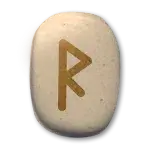
Wheel, travel, path. This rune represents the movement and strength of a person in the decisions to be made. A journey to be undertaken in search of the values of each and consequently in search of self.
The return to the right path and to a correct order of things. Turned upside down it indicates impediments and delays in plans and projects already programmed, disturbances, sudden journeys full of inconveniences.
Sowilo

Sun, life force. The Sowilo rune symbolizes the imposing energy of the sun, source of light and life. It predicts a full success in any project to be undertaken, ensures good health and considerable vital energy to be channeled towards the result of their goals.
Beware, however, the hidden warning: sol, in fact, looks like a lightning bolt that can strike suddenly sweeping away everything in an instant and the ideology that in the past has used the power of this rune to dominate others has suffered the inevitable destruction and ruin.
Sowilo is not reversible but it can indicate in an unfavorable context that you have abused your energies or you have made improper use with the consequent loss of clarity in seeing the reality of things.
Thurisaz
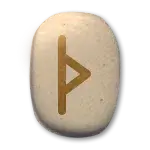
Thorn, protection. This rune impersonates the power of the hammer of the thunder god Thor that imposes respect. It represents the defense, the conscious action of the mind.
For the plant the thorn is a protection to keep away possible enemies. It also means luck and protection in business, regeneration. Turned upside down it indicates discouragement, passive resistance and uncertainty.
Tiwaz
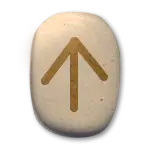
The spiritual warrior, courage. The Tiwaz rune has a very high power and represents strength, endurance and reliability.
It is a protective rune used anciently by ancient warriors to protect them in battle but also embodies the competitive spirit and the principle of hard work and overcome someone or something even at the cost of enormous sacrifices.
In fact Tiwaz is also the rune of the will, the willingness to give up something dear to restore balance and harmony. It is the strength that makes us continue despite the difficulties that must be motivated by noble ideals and not futile personal selfishness.
Tiwaz being a rune with masculine polarity in the context of a particular reading can indicate male sexuality, fertility and procreation. Turned upside down indicates the lack of positive qualities that expresses straight, namely surrender in the face of difficulties, lack of self-confidence and loss of enthusiasm.
Uruz
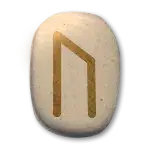
The primitive force, resistance and energy that must flow in us without dominating us. It expresses the will to fight against all adversities and the ability to face anyone.
It can also mean iron health, courage, and self-confidence. Turned upside down it indicates hard feelings, poor health, lost opportunities and disappointments.
Wunjo
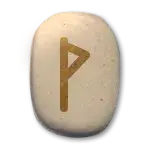
Joy, pride, good fortune. Wunjo represents the coming true of desires and the realization of projects. The pride and satisfaction of having accomplished a project and the joy for the work done.
She is able to harmonize and therefore bring peace on completely opposite points of view. It also favors the birth of new business relationships that can result in a positive economic situation.
Inverted indicates the opposite of joy: bad luck, sadness, impediment to projects and problems that could make your life chaotic and hectic, not allowing you to find inner peace.
White Rune or Odin’s Rune
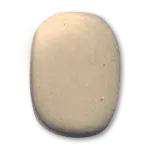
It symbolizes all that is unpredictable and unknown to us. This rune symbolizes the All because, according to Norse mythology, Odin created the stars, planets, moons, mountains and oceans. Eventually, he created all the living things that inhabit the planet.
On the one hand, this rune stands for change, so whatever happens, you must accept it. On the other hand, the Odin rune is generally positive, so you should be happy about that change since it means progress in your life.
Norse Runes in Brief:
| Rune | Meaning |
|---|---|
| Algiz | Protection, Defense |
| Ansuz | Odin Rune, God, Communication |
| Berkana | Femininity, Fertility, Birth |
| Dagaz | Dawn, Awakening, Awareness, Illumination, Hope |
| Ehwaz | Transportation, Movement, Progress |
| Eihwaz | Balance, Reliability, Dependability |
| Fehu | Wealth, Abundance, Success |
| Gebo | Gift, Balance, Generosity |
| Hagalaz | Wrath of Nature, Being Tested |
| Inguz | Growth, Change, Common Sense |
| Isa | Clarity, Stasis, Introspection, Watching & Waiting |
| Jera | Time of Peace and Happiness, Fruitful Season |
| Kenaz | Vision, Creativity, Knowledge |
| Laguz | Water, Intuition, Emotions, Flow |
| Mannaz | Humanity, Individuality, Friendship, Cooperation |
| Nauthiz | Need, Restriction, Conflict, Willpower, Endurance |
| Othala | Inheritance, Ancestry, Possessions, Heritage |
| Perthro | Fate, Mystery, Secrets |
| Raidho | Travel, Rhythm, Spontaneity |
| Sowilo | Sun, Success, Goals Achieved, Honor |
| Thurisaz | Brutal Power, Warrior, Thor’s Hammer |
| Tiwaz | Masculinity, Justice, Leadership |
| Uruz | Strength of Will |
| Wunjo | Joy, Comfort, Pleasure, Success |
6 Interesting Facts About Norse Runes
- Norse Runes are an ancient Germanic alphabet, used for writing, divination and magic throughout northern Europe, Scandinavia, the British Isles, and Iceland from about 100 AD to the present day.
- There are 24 runes in the Elder Futhark, the first runic alphabet, which was used from the 2nd to 8th centuries.
- Norse Runes were usually carved on wood, bone, or stone, and were sometimes used as charms or talismans.
- Rune divination was a popular way to consult the gods in Scandinavia during the Viking Age (9th-11th centuries).
- Runes were also used for magical purposes, such as protection against evil spirits, and for writing spells.
- The word “rune” comes from the Old Norse rún, meaning “secret, mystery.”
Norse Runes – FAQs
What materials were Norse runes typically carved or drawn on?
Norse runes were commonly carved on materials like wood, bone, and stone. They were also sometimes drawn or painted for talismanic purposes.
How many Norse runes are there?
There are 24 runes in the Elder Futhark and 16 runes in the Younger Futhark. The Younger Futhark is a simplified version of the Elder Futhark.
What time period did the Norse use runes?
Norse runes were used throughout Scandinavia and northern Europe from around 100 AD to the 12th century, spanning the Viking Age. The last known inscription dates to 1171 AD.
Are runes still used today?
Yes, Norse runes continue to be used today by some pagans and New Age practitioners for divination, magic, and spiritual purposes. Many people also get rune tattoos.
How do you properly cast runes for divination?
Typically, runes are cast on a special cloth from a bag or box while focusing on a question or issue. The runes are then interpreted based on their orientation and position relative to each other.
What is the blank or Odin rune?
There is a 25th “blank” rune that symbolizes the unknown or unknowable. It is also sometimes called the Odin rune after the chief Norse god Odin who discovered the runes.
Were runes really magical or just an alphabet?
Runes served both mundane and magical purposes. As an alphabet, they were used for everyday writing. But they were also intrinsically tied to Norse religion, mythology, and magic.
Are runes related to tarot cards?
There are some similarities between runes and tarot in that both can be used for divination. However, runes have a different historical origin and symbolic meaning than tarot cards.
What is the difference between Elder and Younger Futhark runes?
The Elder Futhark has 24 runes, while Younger Futhark has only 16. The Younger Futhark developed later as a simplified alphabet with fewer letters.
Are You Passionate About Viking Culture Or Norse Mythology?
Finding the ideal Viking Jewelry can be challenging, especially if you lack inspiration or don’t know where to look. Surflegacy is the final destination for the modern Viking fan looking for something different. We have a wide range of Viking items in various styles, shapes, colors, and materials, to accentuate your Viking look.
Our pieces are crafted in Italy with care and style in mind, and reasonably priced, so you won’t have to break the bank to get one. For more Norse Jewelry visit our store and let us assist you on your fashion journey.

